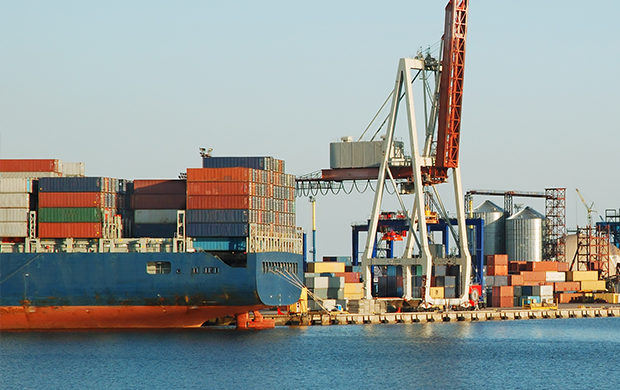APM Terminals is the latest terminal operator at the Port of New York and New Jersey to address one of the banes of the industry – empty container returns – through sharing more information with local truckers. The additional visibility into its operations is part of a broader push coming from federal regulators to boost efficiency through greater data sharing among port stakeholders.
APM’s Elizabeth, New Jersey, facility this month began adding more detail to its appointment dashboard that allows truckers to view which empties the terminal is taking in by line and equipment type. The feature means truckers won’t face a “dry run” to the terminal by making an appointment for an empty return, only to be informed at the gates that the particular container type is not being accepted due to a lack of space.
APM’s upgraded system follows a similar move at Global Container Terminals’ Bayonne facility, the only other appointment-based terminal in New York and New Jersey. In early 2022, its appointment system was upgraded to receive empties by ocean carrier ownership and size. Michael Verney, director of gate operations at GCT, said in a recent statement to the Journal of Commerce that the upgraded appointment system was in response to the volume surge of the last two years that left local truckers stranded with empty containers and stymied their ability to quickly retrieve import loads. As a result of the upgrade, GCT was able to take in more empty containers and reduced the number of days that truckers were locked out from returning empties.
“During the height of the pandemic all our terminals were operating at full capacity because of a combination of high volumes and very high import dwell times,” Verney said. “To support these high utilization rates and ensure terminal fluidity, GCT added new capabilities at both terminals to quicken turn-times for our trucking customers.”
Faced with last-minute restrictions and changes on when and where empties could be dropped off, New York-New Jersey motor carriers have long sought more clarity on such returns to efficiently dispatch drivers, said Tom Heimgartner, chairman of the Association of Bi-State Motor Carriers. He said drivers at his company, Best Transportation, can do more “double moves” at marine terminals where an empty container is dropped off while picking up an import container.
“We find it helpful,” Heimgartner said. “We’re reducing the total number of empties at the port, so that’s a big help because it frees up chassis and allows us to do more double moves. That’s the key to our productivity.”
Shippers ‘starved for information’
Along with terminal-specific projects, the New York-New Jersey port is looking to provide more information as a whole. John Atkins, president of GCT’s overall US operations, said during a Wednesday update about NY-NJ port operations that its marine terminals got together last year to assemble operational information in aggregate about truck turn times and container dwell that port officials can provide to truckers and shippers each week. That information was previously word-of-mouth, creating a lot of confusion about the level of activity at the port. He added that shippers and truckers should also tap the Port Truck Pass system used in New York-New Jersey as a single source for information about vessel schedules and empty return locations.
“People were starved for information,” Atkins said. “What’s the average dwell? Where can I return empties? What can I do? There’s a lot of conflicting information out there.”
The need for more detail about overall US port operations due to the container surge came into sharp focus for the Federal Maritime Commission (FMC) during the latter half of 2022. In August, the agency put on the table an “emergency order” that container lines and terminal operators offer more information on cargo availability to reduce the growing backlog at US ports. Separately, FMC Commissioner Carl Bentzel chaired a meeting in September for an agency-led initiative that would make data about cargo availability more readily available. Atkins said New York-New Jersey marine terminals are responding to the agency’s requests through those recent efforts.
“What you read coming out of Washington is more information and transparency,” Atkins said.
Source: Journal Of Commerce

